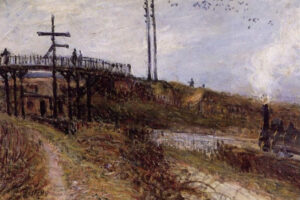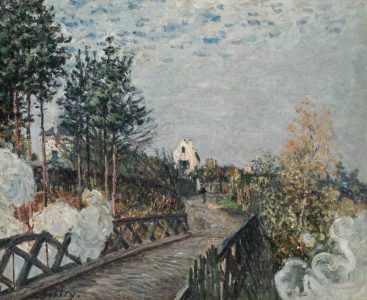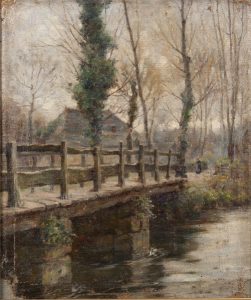The Railway Bridge ©1880
COMPARISON
The row of poplars follow the oblique angle of the wooden footbridge and the enchanting scene confirms the artist’s fondness for these landscape features.
The subtle angle of the composition accentuates the focus given to the left side of the canvas. The Corot influence remains with the white building seen through the screen of poplars.
Similarly positioned, the apex and color hue of the roof match.
The oblique angle of the diagonal railing leads the viewer to the approaching figure, similarly positioned left of centre to the bridge
TITLE and BILLOWING STEAM
’The Railway Bridge’ explains the bridges functionality and the speed and direction of the locomotive passing underneath is captured by the billowing steam.
Quite deliberately, the billowing steam covers-up the view down to the tracks and becomes part of the 'enchanting scene’ with it’s row of poplars and wooden bridge on the left side of the canvas.
’The Footbridge over the Railroad at Sevres’ © 1879

Funnel billowing-out steam, the locomotive speeds towards the bridge in the railway landscape.
In London, Sisley studied the artist JMW Turner and was possibly influenced by,
”Rain, Steam and Speed” – The Great Western Railway.
The Third Impressionist Exhibition of 1877 included (7) of
Gare Saint-Lazare series of paintings by Claude Monet.
COMPARISON AND SEQUENCING 'THE FOOTBRIDGE’ ©1867
’The Railway Bridge’ ©1880 matches compositional motifs.
'Snow Scene, Moret Station’ 1888 sequences compositional motifs.
See Pages: Sequencing



